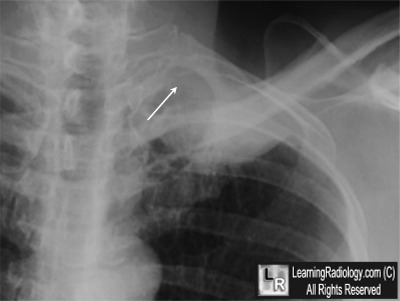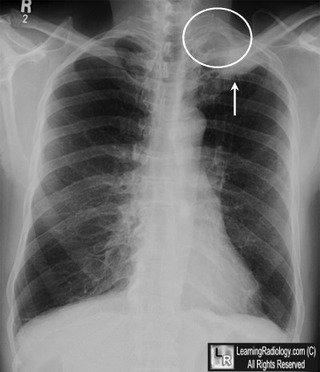Pancoast Tumor
A cancerous growth in the apex of the lung. 90% of patients present with shoulder symptoms, not respiratory. Upon clinical exam, a patient with a pancoast tumor may have atrophy of the hand intrinsics. In advanced stages, there will be increased deep tendon reflexes related to cord compression and cervical myelopathy. A history of smoking may also be associated with this condition.
Signs similar to thoracic outlet syndrome:
Signs similar to thoracic outlet syndrome:
- Can present with numbness and tingling in 4th and 5th digits
- May present with diminished pulse secondary to compression of subclavian artery and vein
- Pain in shoulder, scapula, medial aspect of arm in C8-T1 dermatomes
- Symptoms frequently awaken the person at night and symptoms worsen
- No relief from NSAIDS or physical therapy


